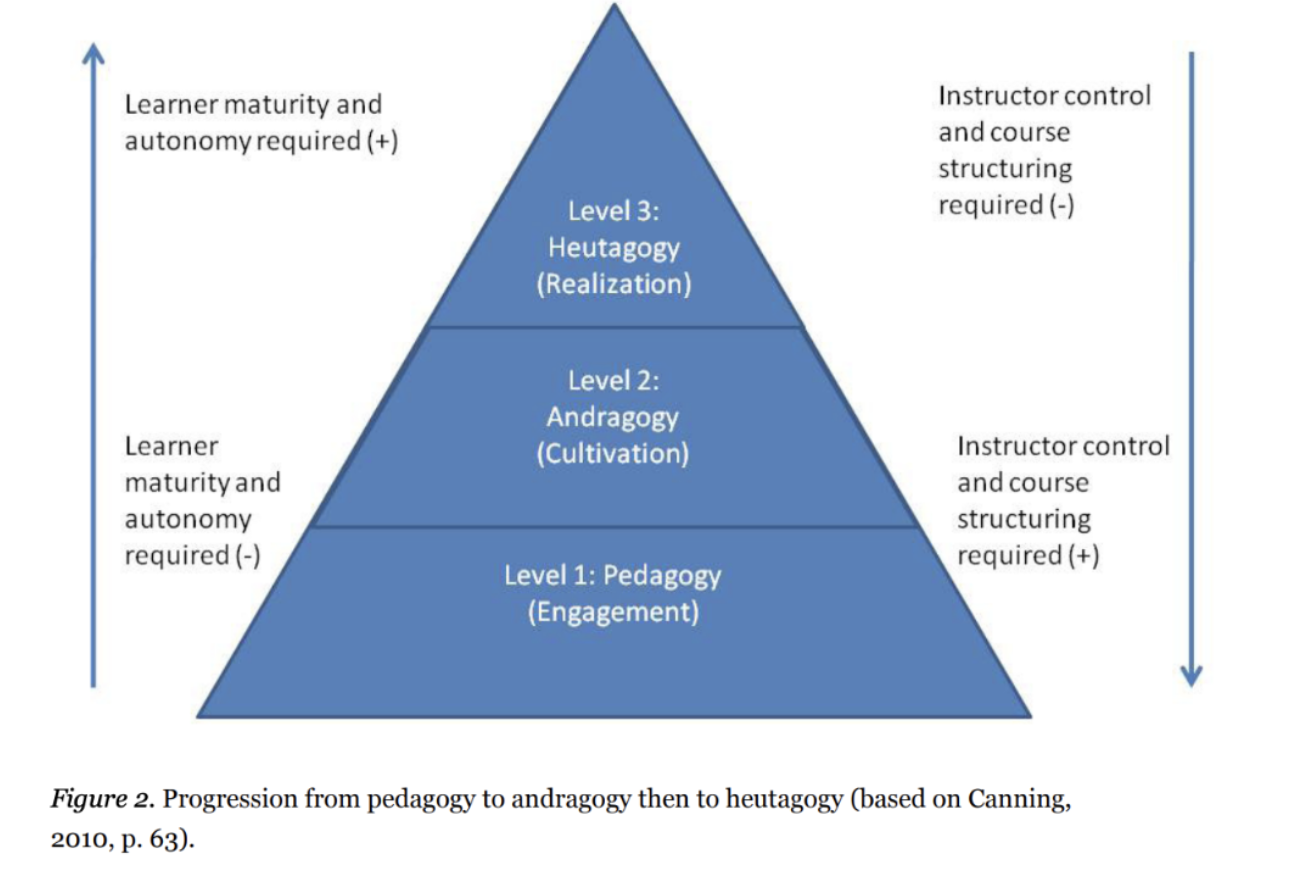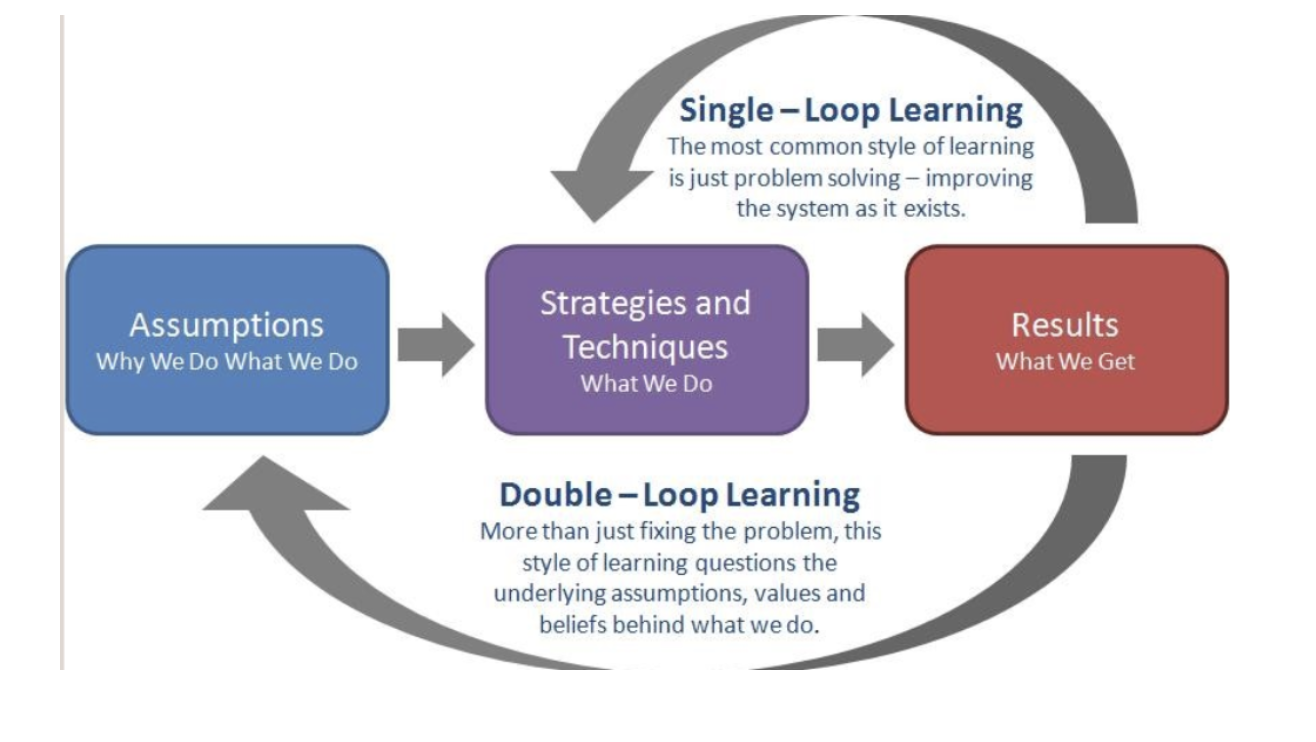On this occasion, and ahead of her upcoming webinar, Nadine Davis shares with us some insights into heutagogy. Over to Nadine…
In a world of rapid educational change, effective teaching and learning cannot be sustained by static training models. It’s time to shift from delivering professional development to designing teacher development that nurtures self-efficacy, creativity, and reflective inquiry. This is where heutagogy, or self-determined learning, offers a transformative framework.
Originally proposed by Hase and Kenyon (2000), heutagogy places emphasis on developing capability over competency. Rather than training teachers to implement strategies, we empower them to question, adapt, and reimagine their practice in response to dynamic classroom realities. In this model, educators are not passive recipients of knowledge, but active agents in constructing their own professional journeys.

Canning’s Pyramid (2010)
(Canning, 2010, p. 63)
The diagram above illustrates the progression from pedagogy (structured, teacher-directed learning) to andragogy (adult learning that’s collaborative and reflective), and finally to heutagogy, where teachers lead their own learning with autonomy. This model reflects the journey of a teacher through a spectrum of experience and interest, mirroring what we ask of children in the classroom: increasing responsibility, deeper inquiry, and real-world problem-solving.
As Blaschke (2012) notes, heutagogy is closely linked to developing self-efficacy—a belief in one’s own capacity to effect change. This belief is central to sustainable teaching and learning improvement, interestingly stemming from observing the productivity of University students during the pandemic with reduced capacity for facilitation. When teachers trust in their ability to identify and solve real problems, their professional confidence increases, and with it, their impact on student learning.
In early years education, where responsiveness and attunement are essential, a heutagogical approach allows practitioners to co-create environments based on children’s developmental needs and evolving interests. It encourages them to move beyond prescribed checklists and engage in dynamic, reflective practice that evolves with their learners.
Canning (2010) describes this shift as moving from “doing to” teachers toward “working with” them — empowering educators as co-creators of learning. This leads to more meaningful teacher development that honours experience, invites experimentation, and centres dialogic reflection.
To truly empower teachers, we must move beyond one-off workshops and start addressing the assumptions that underpin our teaching and learning decisions. The double-loop learning model (Argyris & Schön, 1978) illustrates how this can be achieved.

Single vs. Double-Loop Learning
(Argyris & Schön, 1978; adapted)
While single-loop learning focuses on improving results by adjusting techniques, double-loop learning goes deeper, prompting educators to challenge the very beliefs and assumptions driving their actions. This model is crucial in heutagogical teacher development, where learning is not about compliance but transformation.
For instance, in an FS2 classroom, rather than simply trying to improve children’s fine motor skills for writing, a teacher might ask: Should we be introducing pencil control at this age? What alternative forms of expression honour child development? These reflective inquiries open doors to more intentional and meaningful teaching and learning practices and provoke meaningful conversations, at times debates, amongst colleagues.
For heutagogy to thrive in school settings, we need bespoke, flexible professional development pathways that centre teacher voice and context. Key components include:
Eberle & Childress (2005) highlight that meaningful teacher development happens in real contexts, supported by trusted relationships and authentic problems of practice. Pedagogy partners—whether leaders, coaches, or experienced peers—serve not as experts, but facilitators of learning, walking alongside educators as they explore their own questions and challenges.

At its heart, heutagogy is about building a culture of professional trust and inquiry. It means giving teachers time to reflect, space to experiment, and freedom to shape their own paths. This approach is not unstructured; rather, it is a responsive, dynamic model of teacher development that reflects the real work of teaching and learning.
By embedding heutagogical principles into school culture, we invite teachers to become active learners—curious, capable, and courageous. In doing so, we not only uplift their professional identity but elevate the teaching and learning experience for every child they serve.
References

Nadine is a values-driven educational leader, hailing from south London, committed to nurturing both children and educators through a balanced, relational, human-centred approach. She believes that true learning engages not only thinking, but the feeling and doing—and that education should be developmentally appropriate, emotionally attuned, and rooted in meaningful experience. Nadine strives to lead with intention, blending regulatory expectations with a deep respect for the rhythms of childhood and the importance of sensory-rich environments. Her work centres on building strong school cultures where curiosity, connection, and reflection are at the core. Whether She’s designing curriculum, mentoring staff, or shaping assessment, Nadine focuses on what’s best for children and sustainable for teachers. For Nadine, leadership is about cultivating a learning community that grows with integrity, joy, and purpose.